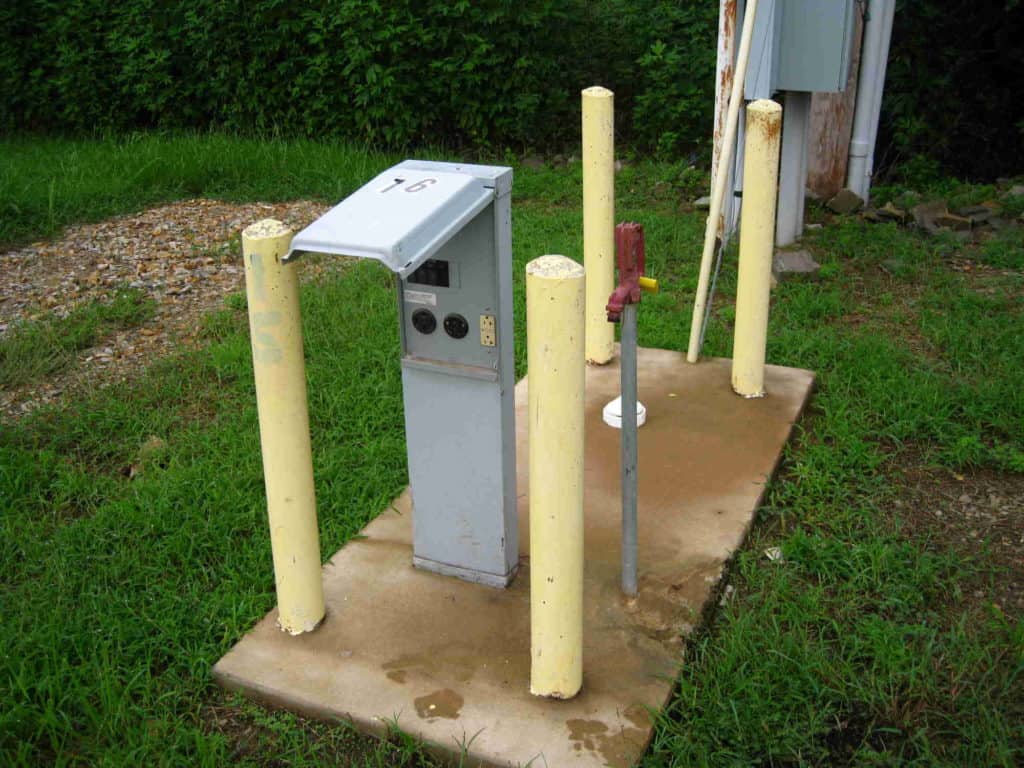Hooking Up Your RV Electric
Hooking Up Your RV Electric when you get to a site is overall a pretty simple process. I know the first time I hooked up at a park I thought, “No problem, how hard could it be?” And that is true, it is not very hard, but there are a few things that would be very helpful to know BEFORE you attempt hooking up your RV electric.


After you have found your site, parked, and leveled your vehicle, the first thing you will want to do is get the electric running. Your rig has probably been running on the battery and propane gas since you left wherever you are coming from, and you will want to get the fridge running back on the electric, and your battery charging again. Also, it is helpful to have the electric running in case you need light etc for the rest of your setup.
Hooking Up Your RV Electric Guideline
First Prepare
ALWAYS look in the power box on the pedestal and make sure the circuit breaker is in the off position. This step is very important and gets overlooked a lot. Then get your power cord out. Your power cord should be long enough to reach from the power pedestal to your rig with no strain. If the cord is stretched out to it’s max length, it is probably smarter to just move closer to the pedestal. Better to be safe. Another option is you can buy an extra long cord, or you can buy another shorter cord and attach the two.
Next Step
Next, When you pick your spot, you should know what kind of electric hookup the site has to offer. Basically, every electric site has either a 50Amp, 30Amp, or 120V hookup. In turn, your rig will have either a 50Amp, 30Amp, or maybe a 120V hookup. Each of these have a different looking plug and inlet from the other so there should be no confusion. A lot of times the box will have a combination of at least 2 of these options or more. But if the power outlet isn’t the same as your rigs electric outlet, you will need what is known as a dog bone. A dog bone is simply a power adapter. The adapter can convert the 50Amp to a 30Amp or a 120v to a 50Amp, and so on. It is good to have a few different types of these, but I highly suggest you at least always have a 50Amp to 30Amp or a 30Amp to 50Amp depending on what electric your rig runs. This way if the site only has 50, and you run on 30, you can still hook up.
And Then
Next, once you get the appropriate adapters on the power cord if needed, attach your surge protector. A surge protector is not necessary, but I highly suggest getting one. The money you spend on it is well worth the piece of mind knowing that if there is some electric surge, it won’t blow out everything in your RV. If you do get a surge protector, I would suggest getting some type of lock for it. They are pretty expensive and you wouldn’t want someone to walk off with it. Simply attach your surge protector to your cord.
Last
Finally, You are ready to plug in the cord. Simply plug the surge protector that you attached to the cord to the power pedestal and the other to the rig. Flip the breaker in the power pedestal and you should be getting power. If not, flip the breaker back off, disconnect the cord from both the power pedestal and the rig, and report the issue to the front office or camp host.
Thanks for reading! Click Here to check out our other articles!
Contact Us





Thanks for the great guide
Thanks to the excellent manual
This is truly helpful, thanks.